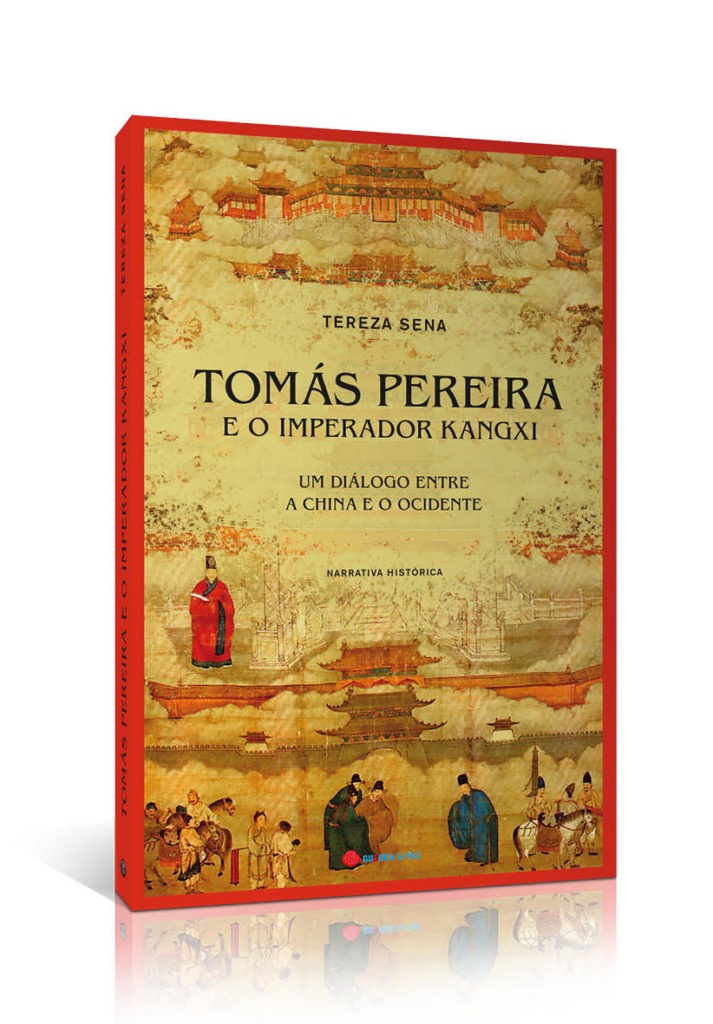“Tomás Pereira and the Kangxi Emperor: A Dialogue between China and the West,” released last month, is signed by Tereza Sena and focuses on the Jesuit who served as an adviser to the Chinese Emperor Kangxi for 36 years. Pereira conquered a place of influence in the diplomatic and political scene of 19th century China. XVII and the book by the publisher Guerra & Paz describes the experiences of the Portuguese as a reflection of this unique historical context. As the promise made in the summary of the story suggests: “This book will certainly arouse the reader’s curiosity and interest in the unusual life of this religious who contributed to the dialogue between East and West, establishing a relationship of closeness and intercultural dialogue never before established”
“As the palanquin descended the enormous steps of São Paulo, Tomás was not yet fully aware that he would never be the same man again. His expertise in calendrical calculation had resonated with the Manchu emperor. Very young, but master of the most vast and legendary empire, almost at the opposite end of the modest village of Pedreiro, where Tomás had been born some twenty-six years ago, in the distant Portugal of his childhood and youth. He had wanted him in his court and, magnificent and all-powerful, he had sent two emissaries to Macao, escorted by five hundred soldiers, so that, as quickly as possible, they would bring to him the skillful Tomás, a priest very curious about the instruments of Mathematics and Arithmetic”.
The excerpt serves to arouse curiosity about the protagonist of the book signed by Tereza Sena. His exception deserved the pages that help to reveal a little more about the relationship of the Jesuits at the court in Beijing and the role they had in the Court of Mathematics for almost 200 years.
“Tomás Pereira is one of those in the group of court priests, who were very few. There are four or five who are at the service of the Emperor, following a strategy implemented by Matteo Ricci a century earlier”, explains the historian, who since 1988 has been dedicated to the study of Macau, and of missions in China and Southeast Asia. The missions in the country were two-fold, she adds. Being with the emperor to be able to appease conflicts if they arose, such as anti-Christian movements, as they guaranteed a zone of influence to calm tensions. And, on the other hand, cultivate alliances with the Mandarins who go to Beijing to be close to them when they took over the government of the different zones of the Empire. “They do the guanxi policy, to ensure local protection”, she describes.
BETWEEN THE MANDARINS
With no status in the official Chinese hierarchy, they are considered courtiers by the imperial power. Tomás Pereira was one of those who enjoyed this closeness. Among the various services he rendered to the Emperor, he was a music teacher and taught him to play the organ.
“He is the first to compose a treatise on Western music in Chinese language in China and for this reason he figures in the annals of the Qing Dynasty itself”, points out the author, who adds other fields in which the Jesuit excelled.

First, he presided over the Court of Mathematics for eight years, between 1688 and 1694. “Here there is already a dialogue because it guarantees the presence of Western knowledge/science in an important task that was the calculation of the calendar, the passage of comets, the floods , among other extremely important issues for an Emperor and proof of good government, taking into account that China was an essentially rural country”, he contextualizes.
Mediation in the negotiations of the first Sino-Russian treaty, in 1689, was another milestone in the Jesuit’s journey. The Treaty of Nerchinsk demarcated the borders between China and Russia, and ended an imminent war situation between the two empires. “It was a guarantee of pacification that lasted more than a century”, underlines the researcher.
The success resulted in the so-called Edict of Tolerance issued by Kangxi in 1692. “For the first time the Catholic religion was no longer considered heretical. There is now a religious tolerance, there is no freedom, but there is tolerance”.
“THIS IS STILL A LONG WAY TO GO”
The priest’s story is unique. Enough to justify another book on him, but there are other points of interest. The historical narrative, divided into parts and designed for the general public, also touches on the relationship between West/East and the role of Macau. “It explains a bit how Macau was important in the formation and connection with Beijing through the provision of these missionaries and how the Jesuits influenced Macau issues”, says the historian.
A par dos registos que os jesuítas como Tomás Pereira deixaram, há muita história. “Mas que é difícil de construir porque não há fontes”, ressalva.
A historiadora, com mais de 60 títulos publicados, reconhece haver cada vez mais académicos dedicados ao tema e que os trabalhos de cooperação são determinantes porque ajudam a superar obstáculos como a língua. “Falta saber que tipo de laços havia entre as pessoas. As famosas Chapas Cínicas [documentos em chinês de correspondência oficial trocada entre Portugal e China em Macau] são um manancial de informação e aí já podemos ter pessoas que ligam os dois lados. Mas há um grande caminho ainda a percorrer”.



